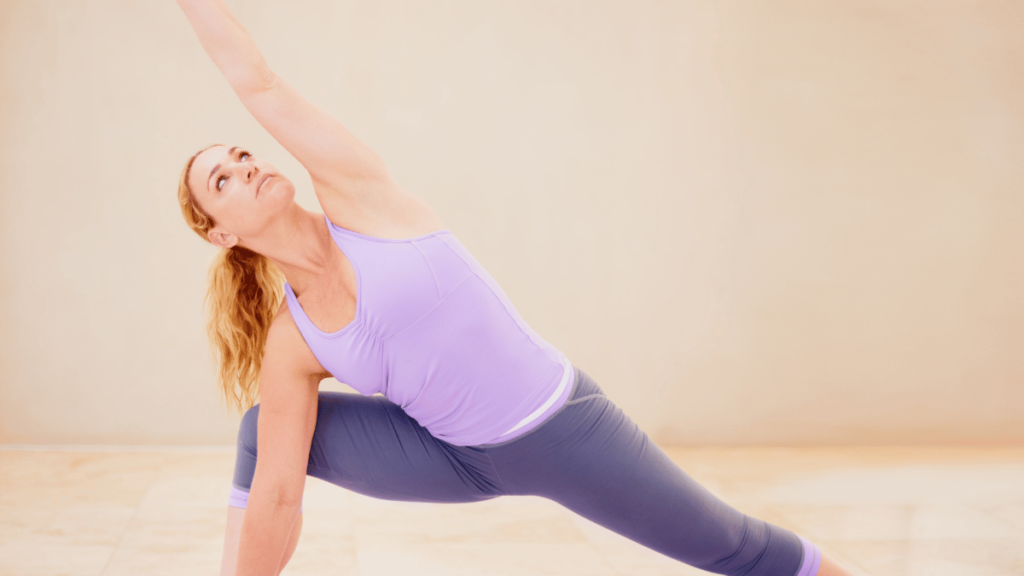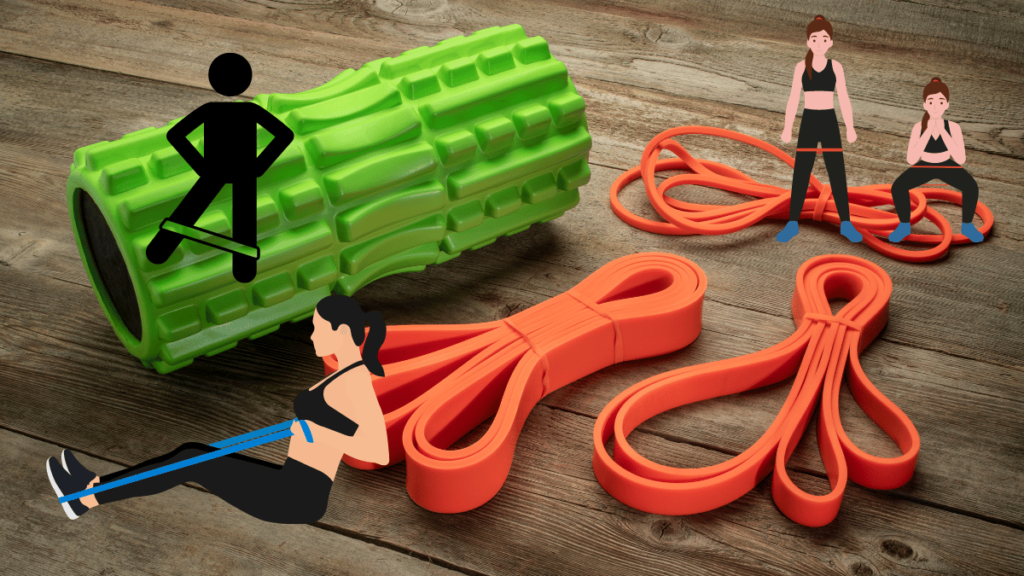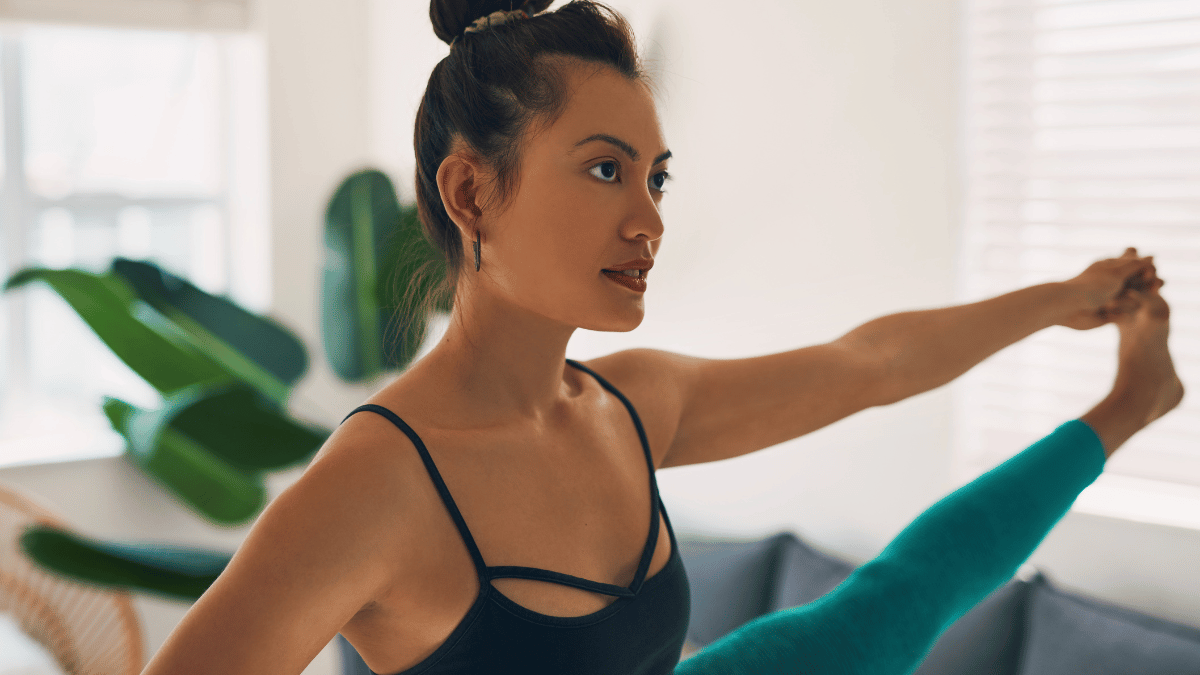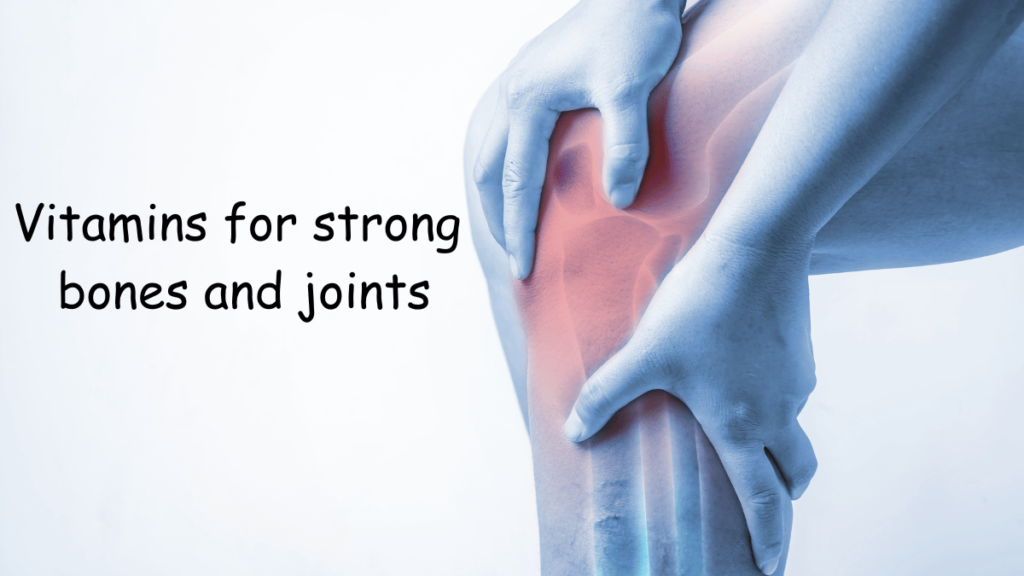Flexibility vs. Mobility: What’s the Difference?
Flexibility and mobility are often confused but represent different aspects of movement. Flexibility is the capacity of a muscle or muscle group to stretch and lengthen. It determines how far a muscle can extend, typically measured through static stretching exercises.
For example, being able to reach your toes with straight legs demonstrates good hamstring flexibility.
Mobility, however, includes flexibility but also involves the active movement of a joint through its full range of motion. It’s about not just how far a joint can move, but also how well it can function dynamically.
Good shoulder mobility, for instance, allows you to lift objects overhead and reach behind your back without discomfort.
In essence, flexibility focuses on muscle length, while mobility integrates flexibility with active control and coordination.
How Flexibility Affects Overall Health
Flexibility significantly impacts overall health in several ways:
1. Improved Performance: Enhanced flexibility allows for a greater range of motion, boosting performance in sports and physical activities by making movements more efficient and effective.
2. Injury Prevention: Increased flexibility helps absorb and dissipate forces more effectively, reducing the risk of strains and sprains.
3. Better Posture: Flexibility exercises correct muscle imbalances and lengthen tight muscles, leading to improved posture and less strain on the spine.
4. Pain Relief: Stretching and flexibility work can relieve muscle stiffness and discomfort by improving blood flow and reducing tension, aiding in quicker recovery.
5. Enhanced Circulation: Improved flexibility supports cardiovascular health by facilitating better nutrient delivery to muscles and the removal of waste products.
6. Stress Reduction: Flexibility routines can be calming, reducing stress and promoting better mental well-being and relaxation.
Key Techniques for Enhancing Flexibility
Stretching Exercises for Better Flexibility
Stretching exercises are fundamental for improving flexibility and can be divided into static and dynamic stretches.
Static stretches involve holding a stretch for a longer period, typically between 15 to 60 seconds. This method is effective in increasing muscle length and overall flexibility.
For instance, performing a hamstring stretch involves sitting with one leg extended and reaching towards your toes, which stretches the back of your leg. Similarly, a quadriceps stretch requires you to stand on one leg while pulling the opposite foot towards your buttocks to stretch the front of your thigh.
Another example is the calf stretch, where you place your hands against a wall, extend one leg back, and press the heel towards the ground to stretch the calf muscle.

Dynamic stretches involve moving parts of your body through their full range of motion and are often used as part of a warm-up routine to prepare the body for physical activity.
For example, leg swings involve swinging one leg forward and backward while standing, which stretches the hip flexors and hamstrings. Arm circles, where you extend your arms out to the sides and make small circles, warm up the shoulders and improve flexibility.
Another dynamic stretch is torso twists, where you rotate your torso from side to side, stretching the spine and enhancing mobility.
Yoga and Pilates for Improved Flexibility
Both Yoga and Pilates are excellent practices for enhancing flexibility and overall body awareness.
In Yoga, various poses are designed to promote flexibility through both static and dynamic holds. For example, the Downward Dog pose stretches the hamstrings, calves, and shoulders while strengthening the arms and legs.
Warrior II is a standing pose that improves flexibility in the hips, legs, and groin, while also building strength. Child’s Pose is another beneficial pose, offering a gentle stretch for the back, hips, and thighs, and providing a restorative break during a yoga session.
Pilates also focuses on controlled movements that enhance flexibility and core strength. Notable exercises include The Saw, which involves sitting with legs extended and reaching towards your toes, stretching the hamstrings and lower back.
The Spine Stretch requires sitting with legs extended and reaching forward, which stretches the lower back and hamstrings. Another exercise, The Roll-Up, involves sequentially rolling up from a lying position, which stretches the entire spine and improves overall flexibility.
Incorporating Flexibility Training into Your Routine
To effectively enhance flexibility, it’s essential to integrate stretching and flexibility exercises into your regular routine. Aim to include flexibility training at least 3 to 4 times a week, with each session lasting between 15 to 30 minutes. Focus on different muscle groups during each session to ensure balanced flexibility.
Maintaining consistency with your flexibility training can be challenging, but establishing a routine can help. Set a consistent schedule for your stretching sessions, track your progress using a journal or app to stay motivated, and make the routine enjoyable by choosing stretches and exercises you like.
You might also consider incorporating flexibility training into other activities, such as yoga or Pilates classes. Always warm up before stretching to prevent injury and enhance effectiveness.
Tools and Accessories to Aid Flexibility
Foam Rollers and Massage Tools
Foam rollers and massage tools are valuable aids for enhancing flexibility. Foam rollers help release muscle tightness and improve blood flow through a technique known as self-myofascial release. By rolling over targeted muscle groups, you can reduce muscle soreness and improve range of motion.
Using a foam roller regularly can complement your stretching routine by preparing your muscles for more effective stretching and reducing recovery time.
Massage tools, such as massage sticks or massage balls, offer a more focused approach to relieving muscle tension.
These tools can target specific areas and help release knots and tight spots. Regular use of massage tools can enhance flexibility by improving muscle elasticity and reducing stiffness, making it easier to achieve a greater range of motion.
Stretching Bands and Resistance Bands
Stretching bands and resistance bands are excellent tools for improving flexibility. Stretching bands, or yoga straps, help you reach and hold stretches that may otherwise be difficult to achieve.
They assist in performing stretches with proper alignment and depth, allowing for a deeper stretch and improved flexibility over time.
Resistance bands, on the other hand, are versatile tools that can be used for both strength training and stretching. They provide a variable resistance that helps increase muscle activation and flexibility.

By incorporating resistance bands into your stretching routine, you can enhance muscle engagement and support a greater range of motion, which contributes to overall flexibility improvement.
Common Mistakes and How to Avoid Them
Overstretching and Its Risks
Overstretching is a common mistake that can lead to injury. Stretching too aggressively or beyond your current range of motion can strain muscles and ligaments, causing pain and potentially leading to longer-term damage.
To avoid overstretching, always stretch within a comfortable range and avoid pushing through pain. Gradually increase the intensity of your stretches over time to allow your muscles to adapt and become more flexible without risking injury.
Ignoring Proper Form
Ignoring proper form during stretching exercises can reduce their effectiveness and increase the risk of injury. Proper form ensures that stretches target the intended muscle groups correctly and safely. To avoid this mistake, focus on maintaining correct alignment and technique during each stretch.
Pay attention to your body’s signals and make adjustments as needed to ensure that you are stretching safely and effectively.
Tracking Progress and Setting Goals
How to Measure Flexibility Improvement
Measuring flexibility improvement involves assessing your range of motion and overall flexibility over time. You can use various methods, such as performing specific stretches and noting how far you can reach compared to previous attempts.
Another approach is to use a flexibility assessment tool or goniometer to measure joint angles and track changes. Regularly documenting your progress can provide motivation and help you identify areas that need further attention.
Setting Realistic Flexibility Goals
Setting realistic flexibility goals is crucial for achieving consistent progress. Start by establishing clear, achievable targets based on your current flexibility level. Break these goals into smaller, manageable milestones to make progress more attainable and keep yourself motivated.
For example, if your goal is to improve your hamstring flexibility, set incremental targets for how much further you can reach over time. Ensure your goals are specific, measurable, and time-bound to effectively track and achieve improvements in your flexibility.
Conclusion
Enhancing flexibility involves a combination of targeted exercises, the use of helpful tools, and an understanding of common pitfalls. By integrating stretching exercises—both static and dynamic—into your routine, you can improve your muscle length and joint mobility. Yoga and Pilates offer additional methods for developing flexibility, combining movement with body awareness to achieve a greater range of motion.
Utilizing foam rollers and massage tools can aid in muscle recovery and tension release, complementing your flexibility training. Stretching bands and resistance bands provide support for deeper and more controlled stretches, enhancing your overall flexibility.
However, it’s important to avoid common mistakes such as overstretching and improper form. Overstretching can lead to injury, while neglecting proper technique reduces the effectiveness of your stretches and increases the risk of harm. By being mindful of these issues and focusing on correct form, you can stretch more safely and effectively.
Tracking your progress and setting realistic goals helps maintain motivation and ensures continued improvement. Measuring flexibility through various methods and setting achievable targets can provide valuable feedback and keep you on track.


